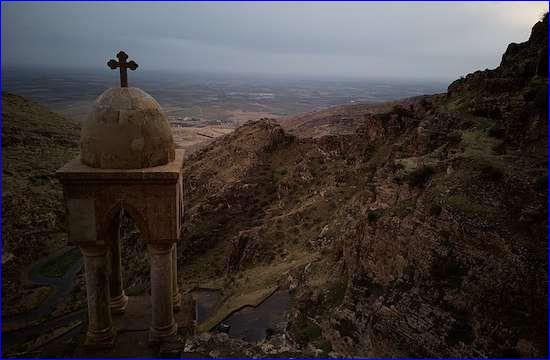


Along with the Armenians, the Assyrian-Chaldean communities (as well as Syriacs and Pontic Greeks) of the Ottoman Empire were considered potential traitors during World War I, notably because of their Christian faith, which they shared with the empire's Russian enemies. Historians estimate that about 1.2 million Armenians were killed, while the number of deaths among the Assyrian-Chaldeans exceeds 250,000 people, representing half of the community in the region at that time.
A lesser known genocide
When the National Assembly in France debate a motion to officially recognize the Armenian genocide, which then became law in early 200, Joseph Alichoran attended in the session.
"I remember the mention of the Assyrian-Chaldeans by some of the speakers during the debates," recalled Alichoran, a historian and Aramaic teacher at INALCO, a university in Paris that specializes in the teaching of languages and cultures from the world.
Related: The Assyrian Genocide
The Armenian diaspora has had a significant presence in France since the end of World War I. Their history would explain the French sensitivity toward the Armenian genocide.
But who are the Assyrian-Chaldeans? With the exception of a few families who survived the Great War like the Armenians and came to France, the Assyrian-Chaldean community began to develop in the country from the 1970s onward. There are now over 30,000 of them. Some 12,000 are concentrated in the Greater Paris area, particularly in Sarcelles (Val-d'Oise).
Aramaic culture and its offshoots
The Assyrian-Chaldean community is made up of Christians from the Church of the East. Historically, it is the Church which arose from the Mesopotamians converted by Saint Thomas the Apostle and his disciples in the very early centuries of Christianity. Centuries of theology, ecclesiastical schisms, and population movements have not erased their ancient tie to teh Aramaic culture and language that Jesus spoke.
The Assyrian-Chaldeans are currently divided into three patriarchates. The Chaldean Catholic Church is union with the Bishop of Rome. As the largest patriarchate, it includes over 800,000 members in Iraq, Iran, Syria, Turkey, Lebanon, Jordan, and the diaspora.
The other two patriarchates, not united with Rome, are the Assyrian Apostolic Church and the Ancient Church of the East. They have about 400,000 members between them. The Ancient Church of the East formed as a breakaway group from the Assyrian Apostolic Church in 1964 when the latter adopted the Gregorian calendar. This newer, traditionalist branch constitutes 10 percent of the Assyrians not united with Rome, or about 40,000 faithful.
"In reality, the term 'Assyrian-Chaldeans' also encompasses members of the Syriac Church, some of whom consider themselves Aramaic," said Alichoran.
Due to the shared Aramaic heritage of these communities, their cultures are often mixed. Ancient schisms also add further complications.
"Christological disputes in the fifth century separated the Church of the East and the Syriac Church in Antioch. The latter itself is split between a Catholic part and an Orthodox part," the historian explained.
Daily ecumenism
While each branch has its own clergy and churches, ecumenism naturally prevails in practice, both in association and worship.
"In the Paris region, for example, members of the Church of the East among the Assyrians do not have places of worship. So naturally, they come to Chaldean parishes," Alichoran noted.
There are three notable Chaldean churches in Greater Paris -- Saint-Thomas in Sarcelles, Saint-Jean in Arnouville (Val-d'Oise), and the chapel of Our Lady of Chaldea in the 18th arrondissement of Paris. The Syriac Church has two parishes -- one in Paris which is Catholic, and the other in Montfermeil which is Orthodox.
Although the three communities are split ecclesiastically, they all come from one heritage, said Alichoran. "I consider these faithful to also be part of my community," he added.

or register to post a comment.